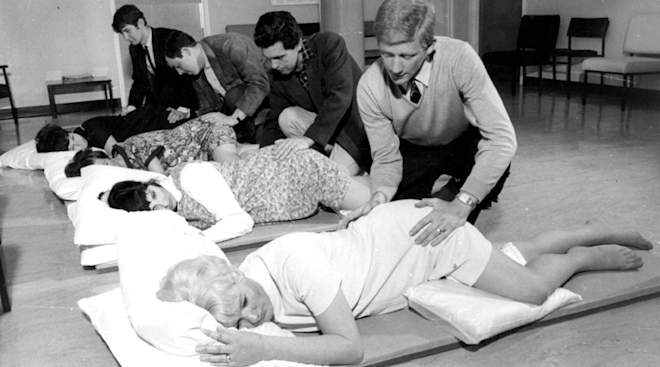New WHO Labor Guidelines Aim to Lower Medical Intervention and C-Section Rates
In an effort to give women a better, safer birthing experience, the World Health Organization (WHO) is revamping its labor guidelines. And the organization is pledging a more hands-off policy, making it a point to reduce unnecessary medical interventions.
“We want women to give birth in a safe environment with skilled birth attendants in well-equipped facilities. However, the increasing medicalization of normal childbirth processes are undermining a woman’s own capability to give birth and negatively impacting her birth experience,” says Dr. Princess Nothemba Simelela, WHO Assistant Director-General for Family, Women, Children and Adolescents in a news release. “If labor is progressing normally, and the woman and her baby are in good condition, they do not need to receive additional interventions to accelerate labor.”
Specifically, this means abandoning the WHO’s previous benchmark for how fast a woman’s cervix should dilate during the early stages of labor. Since the 1950s, WHO has considered anything slower than a centimeter per hour risky. Now, they’re recognizing that rate “may be unrealistic for some women and is inaccurate in identifying women at risk of adverse birth outcomes.” A slower cervical dilation rate alone is no longer enough to warrant intervention like a c-section, forceps, a vacuum or oxytocin to speed things along.
WHO also emphasizes a “woman-centered” approach to labor, including:
- Avoiding unnecessary medical interventions (as mentioned)
- Encouraging women to move around freely during early labor
- Allowing women to choose their birth position
- Allowing women to have a companion on their choice by their side
- Ensuring privacy and confidentiality
- Providing adequate information about pain relief
These new guidelines mirror the latest committee opinion from the American College of Obstetricians and Gynecologists (ACOG), released last year. ACOG also discourages unnecessary medical intervention: “When appropriate, providers are encouraged to consider using low-intervention approaches that have been associated with healthy outcomes and may increase a woman’s satisfaction with her birth experience,” the guidelines read. “It is important that midwives, ob-gyns and other care providers collaborate to support women both emotionally and physically over the course of labor.”
We’re all for letting moms labor how they want. Just remember: Birth plans don’t always go according to plan.
Please note: The Bump and the materials and information it contains are not intended to, and do not constitute, medical or other health advice or diagnosis and should not be used as such. You should always consult with a qualified physician or health professional about your specific circumstances.
Navigate forward to interact with the calendar and select a date. Press the question mark key to get the keyboard shortcuts for changing dates.




















































